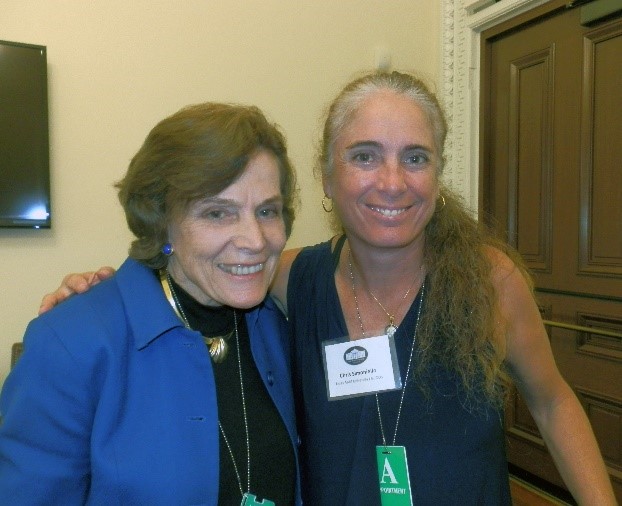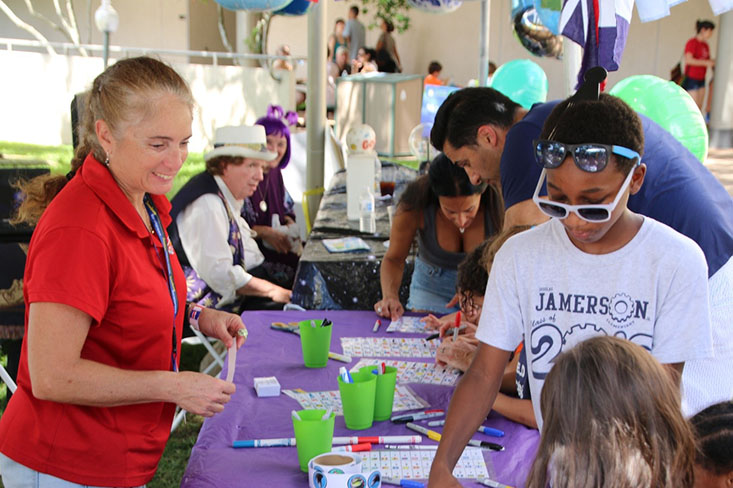Written by Sean Beckwith, Web Content Developer for USF CMS
ST. PETERSBURG, FL – Christina Simoniello is the 2019 first place winner of the Gulf Guardian Award in the Individual category for her work with the Gulf of Mexico Coastal Ocean Observing System (GCOOS). She graduated with her Ph.D. from the USF College of Marine Science (CMS) in 2003.
What is most valuable to you from your time at CMS?
The rigorous coursework really set the stage and became a platform for understanding
larger systems. I think it was the first time in my studies that it wasn’t so myopic.
Having the requirement of the four core classes put things in perspective and set
the stage for the integrative approach to the research that followed in my career.
The field experiences were really valuable. I got to spend a lot of time at sea. As one of a few AAUS certified divers in the College, I had the privilege of working across many platforms – with Pam Muller, Jose Torres, Tom Hopkins, Bob Weisberg, Mark Luther, and any other groups that needed dive support. I got to experience everything from geological to biological oceanography, which was an enriching experience.
On the educational side of science, working with the Oceanography Camp for Girls was priceless because that was a platform that became a living classroom to test a lot of ideas for outreach. I ended up as a NSF GK-12 fellow through that program, which greatly influenced the merging of my two worlds going forward.
Do you have a favorite memory?
So many. The Pelagic Rangers, our diehard CMS softball team for many years, was always
fun. It had members from all the departments so it was a great way to meet all of
the students. And, the field work was always exciting. There’s nothing quite like
the anticipation of your trawl team hovering at the stern, waiting to see what secrets
the deep waters are going to reveal; or dangling on a rope 30 m below the surface
with 2,000 m of water below you, trying to scoop up gelatinous plankton.
What fires you up?
So many things, especially learning anything new and exciting. And challenges. I
love troubleshooting. When people say something can’t be done but you know it’s really
important, I find it very gratifying to make it happen. I enjoy pulling people together
when others say these cultures can’t work together; I like creating collaborative
environments to pave the way for good things to things happen.
I like facilitating new discoveries. A recent example involves the U.S. Integrated Ocean Observing System (IOOS) and Animal Telemetry Network we’re working to build. There have been small projects on a localized basis but few large-scale efforts to connect the individual-researcher pieces. Now, things are evolving to connect those pieces and integrate them. From the Caribbean all the way up the northeast coast of the U.S., we’re trying to connect the parts to understand complete life histories of animals. When you’re looking at a Marine Protected Area, for example, it’s not just this one footprint in the middle of the Caribbean that’s important but all of the other pieces that have to be connected. Working across many communities to get down into the nitty-gritty for what has to happen for holistic management, I find very rewarding.
I also love working with youth programs. I coach volleyball at the YMCA and at a middle school. I’m a sports junky. I think it’s a great tool to excite kids about science because you can always connect the mechanics of the motions to some scientific characteristic that you’re trying to teach them. When we play basketball, we use magnets for defense – you know, don’t break your bonds and that kind of stuff. The kids laugh and think it’s silly, then proudly tell their parents about electromagnetic forces.

Dr. Simoniello and Dr. Sylvia Earle tackling citizen science ideas at the White House Executive’s Office of Science and Technology Policy forum “Open Science and Innovation: Of the People, By the People, For the People”.
You were selected as the EPA’s 2019 Gulf Guardian winner. Which accomplishments leading
to this award have been most important to you?
The partnerships. We work a lot with the Gulf of Mexico Alliance. In the early days, there was confusion as to whether we were stepping on each other’s
toes and duplicating efforts. Over the years, the relationships and partnerships
that evolved allowed us to do some amazing things that we would not have done otherwise.
Working with informal learning communities like the Florida Aquarium, the Texas State Aquarium, the Audubon Aquarium of the Americas and the Sea Grant network has been rewarding and has expanded my ability to engage the public in hot-off-the-press science issues in new and fun ways.
The GCOOS board of directors and stakeholder community is fairly unique. We work with state and federal government, industry, the academic sector, and also do outreach and education. Learning to work across all these sectors is probably the most challenging and valuable skill I’ve honed in my professional life. It’s also very humbling. On any given day, I might be working with the environmental lead for Stones, the world’s deepest oil and gas platform, discussing mitigation strategies with local government, or working on building global citizen science capacity.
We also work with the Navy and with multiple universities operating a variety of instruments. Being able to pull the information together into a regional system and supply the data freely to all who need it is really cool. We don’t own any of the assets in the water but we work with the data providers to create seamless data access points for end users. I like that we’re able to take the burden off the people who are trying to use the data and apply it for the greater good.
Any final thoughts?
My evidence that USF CMS is a great place is all the people who graduate, leave and come back. With NOAA, the USGS, FWC and others, CMS has become part of a dynamic, exciting science community. I’m grateful for the many opportunities that being part of this family has brought.
EPA press release
https://www.epa.gov/newsreleases/epa-announces-dr-christina-simoniello-2019-gulf-guardian-winner-florida
